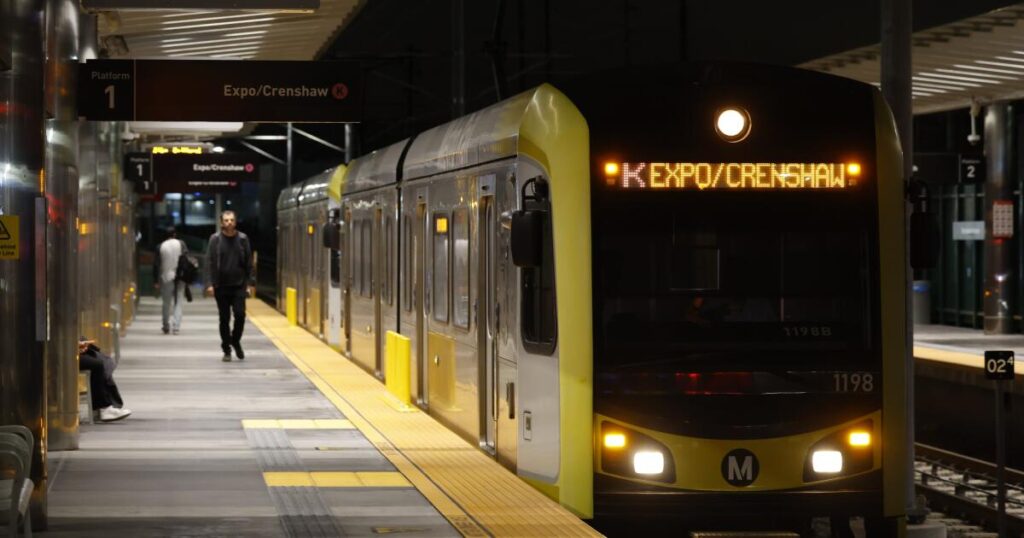
UPDATE: A groundbreaking housing bill, Senate Bill 79 (SB 79), is currently awaiting action from Governor Gavin Newsom, and it could drastically reshape residential neighborhoods across California. Homeowners and city officials are racing against time to understand its implications as the potential for high-density developments looms large.
Just last month, residents like Brendon Gerisch in Los Angeles’ Westchester neighborhood learned that their communities may soon be transformed. The state Legislature voted to allow up to nine-story residential buildings near transit stations, leaving many homeowners feeling blindsided. “I feel like I’ve been blindsided,” Gerisch expressed, emphasizing that what was once their “forever home” now feels uncertain.
SB 79 aims to accelerate housing production near public transit in regions including Southern California, Sacramento, and the San Francisco Bay Area. Should Newsom sign the bill, developers will be granted permission to build significantly taller residential structures—up to nine stories adjacent to subway stops and seven stories within a quarter mile. This change overrides local zoning regulations, sparking fierce debate among residents, politicians, and advocacy groups.
In a move met with both support and backlash, SB 79 includes exemptions that have complicated its understanding. Critics are particularly irate over a last-minute “Beverly Hills carve-out,” which limits the bill’s reach in cities with populations under 35,000, such as Beverly Hills and South Pasadena. Additionally, properties regulated by local rent stabilization laws will be exempt from the bill, aimed at preventing displacement of renters.
As cities scramble to evaluate the bill’s impact, officials have pointed out that understanding which neighborhoods are affected is a daunting task. Cindy Chvatal, co-founder of United Neighbors, stated that residents are left in the dark, lamenting, “They never came up with a map before they voted. And we still don’t have an accurate map right now.”
Despite the confusion, proponents like Erik Mebust, spokesperson for bill champion Sen. Scott Wiener, argue that the benefits of the bill outweigh the uncertainties. He acknowledged the challenge of visualizing SB 79’s effects but stressed that legislators had been provided with approximations during the discussions.
Los Angeles officials have even released a draft map indicating potential upzoning areas, but they caution that it is for exploratory purposes only. The city is estimated to have around 150 transit stops that could be impacted, significantly increasing the density of neighborhoods like the San Fernando Valley and Westside.
The urgency surrounding SB 79 heightens as city leaders express their discontent. The Los Angeles City Council passed a resolution opposing the bill, labeling it as “chaos” and a “one-size-fits-all mandate.” Councilmember Katy Yaroslavsky voiced frustration, claiming that Sacramento’s decisions unfairly burden Los Angeles while exempting nearby Beverly Hills.
The bill also allows cities to delay implementation in high fire hazard areas until approximately 2030, responding to safety concerns post-recent wildfire devastation. Matt Lewis of California YIMBY emphasized the necessity of addressing the housing crisis and climate change, arguing that building near transit stops is essential for equitable access to public amenities.
With public sentiment deeply divided and the potential for significant changes on the horizon, all eyes are now on Newsom. Should he choose to sign SB 79, the way neighborhoods across California function could shift dramatically, affecting thousands of residents. The time for action is now, as communities brace for the impending decisions that will shape their futures.
As constituents await the governor’s decision, the urgency to understand and respond to SB 79 remains paramount, with lasting implications for housing availability, urban development, and community stability. Stay tuned for updates on this critical legislation as it develops.







